Welcome to the weird and wonderful world of snakes – with an emphasis on ‘weird’! All snakes are fascinating and unusual creatures – they have no legs but can easily move around, and many can also climb and swim. They have nostrils but don’t use them to smell and just one lung. There are thousands of species of snakes on the Earth today and some of these are very weird indeed! At least 150 snake species live in the US alone. So, let’s take a look at the 10 weirdest snakes found in the US.
Hognose
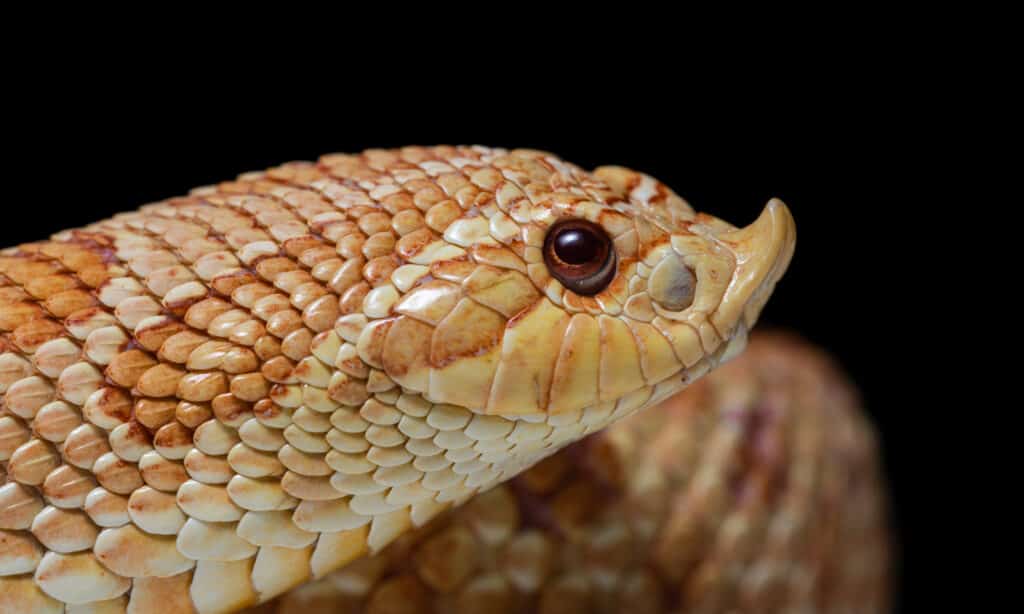
It’s no surprise that hognose snakes have an unusual nose.
©Ana Dracaena/Shutterstock.com
There are no prizes for guessing what the nose of a hognose snake looks like! They use their distinctive upturned snout to burrow in the dirt, moving it from side to side to find prey and burrows. The scientific name for this is a turned-up rostral scale. There are several different types of hognose snakes. The western hognose snake Heterodon nasicus is found on plains, prairies, and grasslands from the south of Canada to as far south as northern Mexico. Conversely, the eastern hognose is found from Minnesota to southern Ontario and south to Florida and Texas. These guys have a reputation for being very dramatic when disturbed. They flatten their necks, lift their heads, hiss, and pretend to strike. If that doesn’t work, they play dead!
Rubber Boas
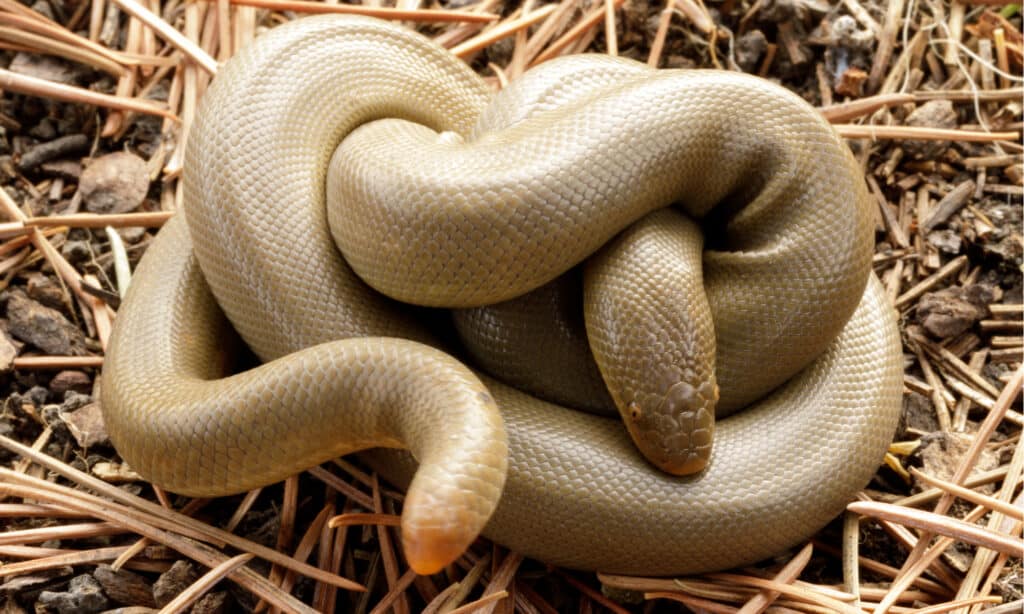
A snake that looks like it’s made of rubber – the rubber boa.
©yhelfman/Shutterstock.com
Rubber boas have glossy, brownish-yellow sales that make them look like they are made of rubber! There are two species living in the US. The northern rubber boa can be found in Wyoming, Utah, Nevada, Washington, Montana, and California. The southern rubber boa is found in southern California. When it comes to habitat, you are most likely to find them in forests, grasslands, meadows, and mountainous areas. When it gets too hot or cold they retreat into burrows or hollow logs. If you ever get to touch one, it even feels rubbery! They are non-venomous and have small teeth, so their bite will not cause you much damage.
Rat Snakes
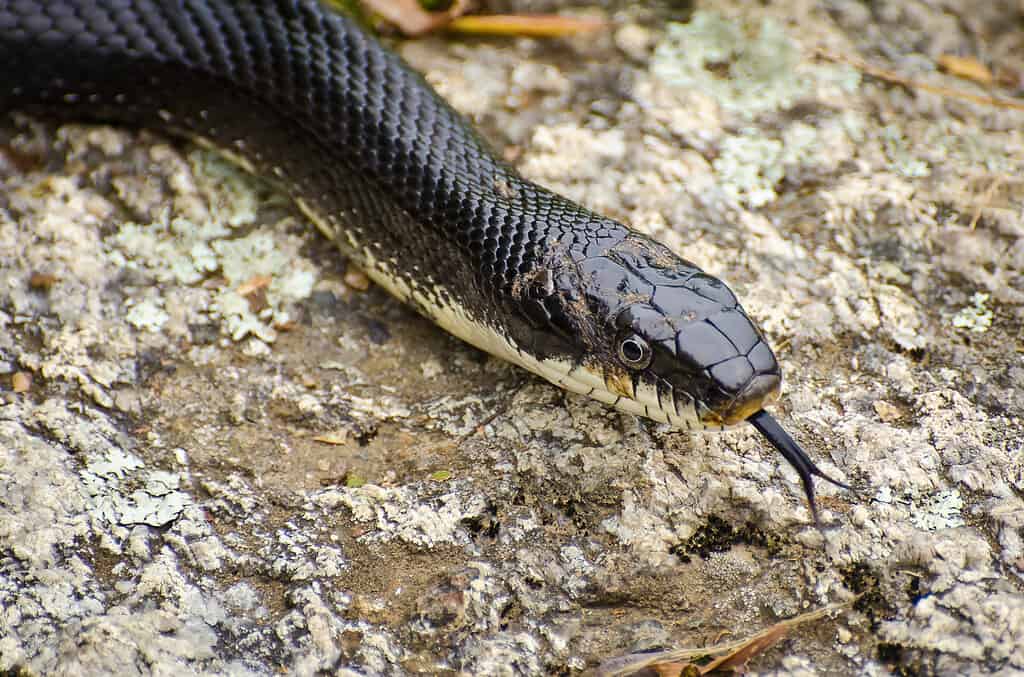
You may spot a rat snake draped around a door handle.
©iStock.com/RCKeller
With this snake, it is their behavior rather than their appearance that makes them a little weird. The Texas rat snake (Pantherophis obsoletus lindheimeri) is one of the most common subspecies of western rat snake in the wild. They are found in the south-central US (Texas, Oklahoma, Arkansas, and Louisiana), and it is not unusual to find them near and in homes. Some people also keep them as pets. They are also found in forests, grasslands, and swamps. These snakes can grow to between 4 and 6 feet and can be in multiple colors including pure white. As a semi-arboreal snake, they can climb quite well and are often spotted draped around door handles which gives people quite a scare!
Arizona Black Rattlesnakes
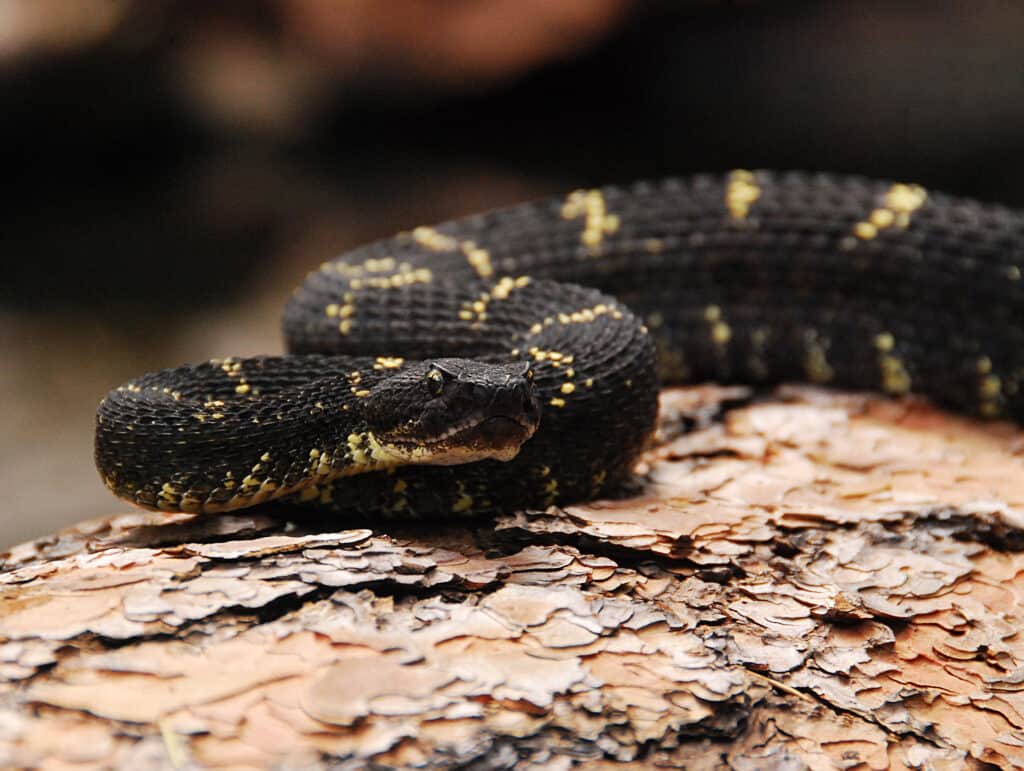
A color-changing
rattlesnake
that is very social – the Arizona black rattlesnake.
©jokerbethyname/Shutterstock.com
Arizona black rattlesnakes are very like other rattlesnakes, but they are a bit weirder! They are found in the heavily forested areas of Arizona, where they like the cool, moist habitat. Most of the time, you will find them coiled up in leaf litter or under rocks – looking very like a cow pie! This species is unusually social for a rattlesnake – they share parenting and basking locations and seem to like interacting with other snakes.
Mature snakes are almost black, but some can change color to grey, and this is associated with stress and feeding. Others seem to be able to control their color changes – getting darker in the day and lighter at night.
King Snake
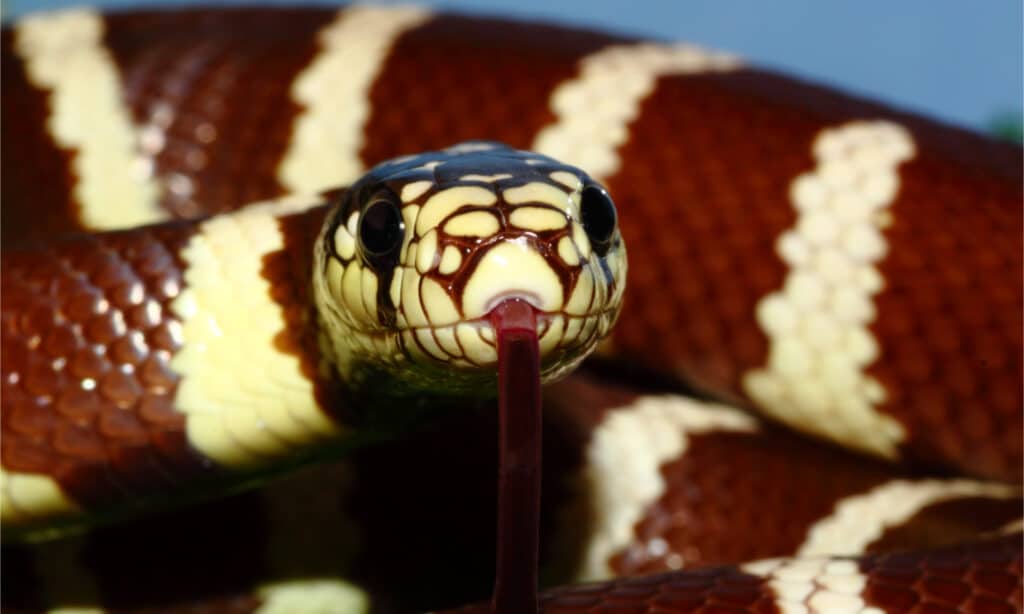
California kingsnakes are non-venomous but come in an insane variety of colors.
©MattiaATH/Shutterstock.com
When it comes to colors and patterns, king snakes are a diverse group of snakes so diverse, in fact, that they verge on weird! Some of the color variations are insane. None more so than the California king snake (Lampropeltis californae), which can be found in the cliffs, wetlands, and grasslands of California. They usually have noticeable bands or stripes, but the colors can be black, yellow, or cream. They can also be speckled or patterned! These bright colors are not just for us to admire. They act as a warning to potential predators, letting them know that they should not eat this snake. By doing this, they mimic some brightly colored venomous snakes. In fact, the California king snake is not venomous at all.
Blindworm Snakes
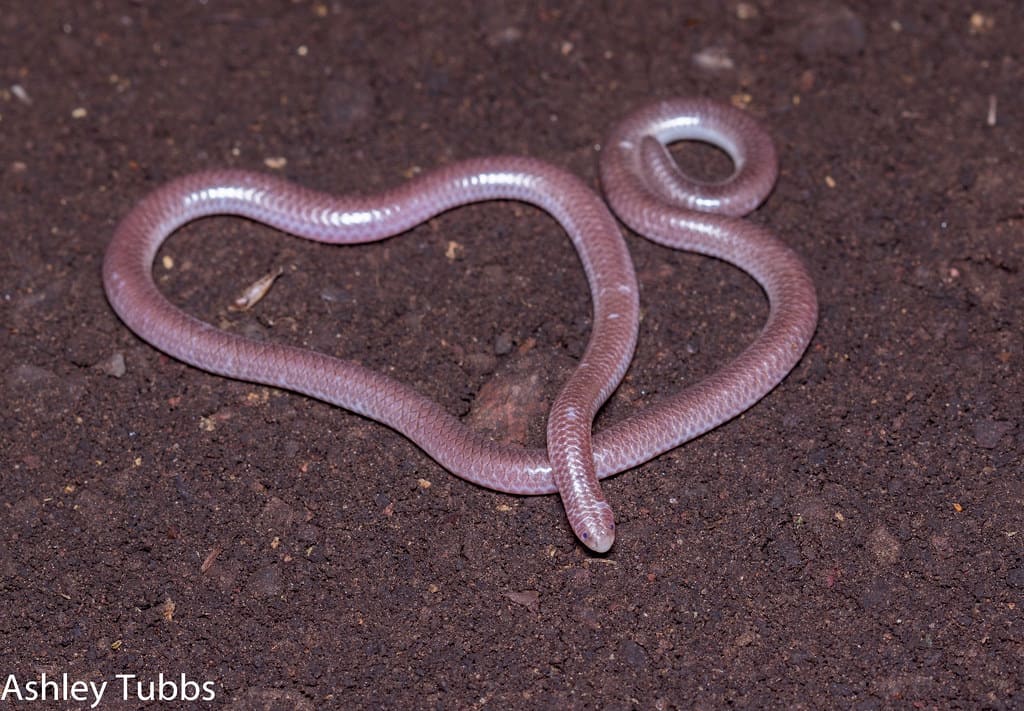
Western blind snakes look like extremely long
earthworms
.
©A-Z-Animals.com/ashleytisme
Harmless but weird! That’s the best way to describe blind worm snakes, which are often mistaken for earthworms. They are actually snakes in the Typhlopidae family, and they are found in many parts of the world, including the US. The western blind snake subspecies Leptotyphlops humilis utahensis is unique to Utah. Their skulls are more solidly fused than most other snakes and they are adapted for burrowing and life underground. They feed on soft-bodied insects and are able to emit a foul-smelling secretion from special glands when they feel threatened.
Rainbow Snake
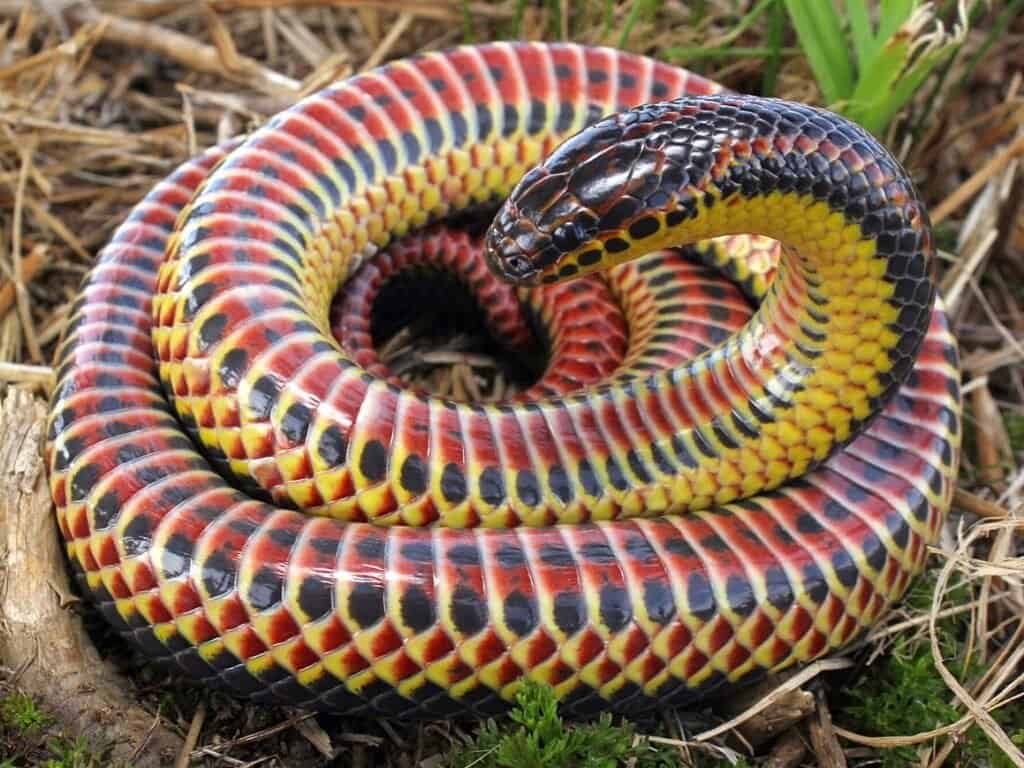
A snake that looks like a rainbow – the rainbow snake.
©Charles Baker / CC BY-SA 4.0 – License
A resident of the southeastern United States, the rainbow snake lives up to its name and is a truly beautiful reptile. This non-venomous snake can grow to over 5 feet long and is found in aquatic environments. This is an elusive snake that likes to keep itself to itself, and we know little about its ecology. Not only are they multicolored, but they also have a shiny, iridescent look, which is mesmerizing. Females can grow to around 66 inches in length, but the males are a little shorter. If you want to spot one, you’ll need to head to the water because they are rarely spotted out of it. Having said that, very occasionally, one is spotted crossing a road after heavy rainfall! The states where you are most likely to see them include Alabama, the Carolinas, Florida, and Virginia.
American Queen Snake
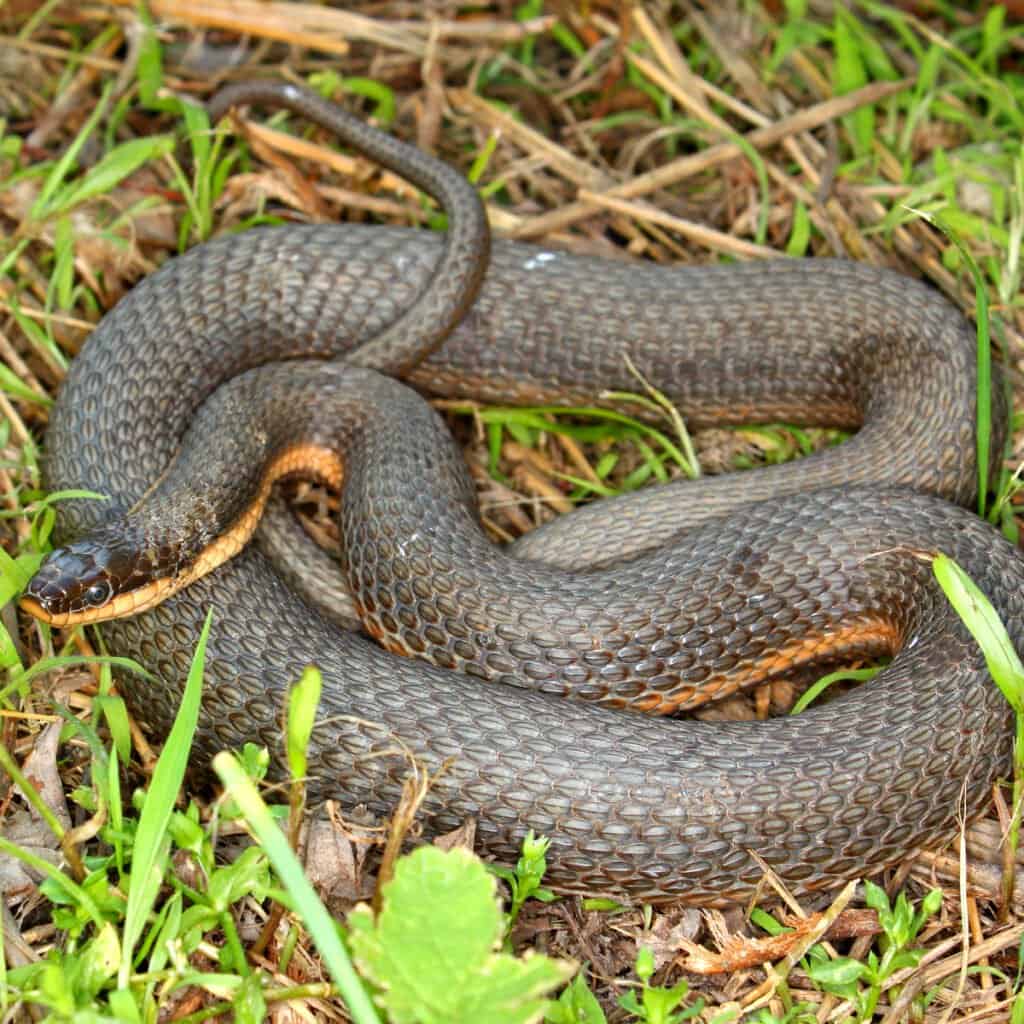
The queen snake is a nonaggressive, fussy eater in North America.
©Jason Patrick Ross/Shutterstock.com
Snakes have very diverse diets and ways of hunting their prey, but they don’t come much fussier than the American queen snake. These guys will feed on almost nothing but freshly molted crayfish. At this stage of their development, the crayfish cannot strike back and are easy pickings for the snake. You can find them east of the Mississippi in temperate climates ranging from Florida through to Ontario. If you want to spot one, head to where the crayfish are – they make up at least 90 percent of this snake’s diet. Occasionally, they are willing to eat small fish and tadpoles. They search for crayfish by swimming under rocks and poking around near other underwater objects, where the crayfish tend to hide.
Ringneck Snake
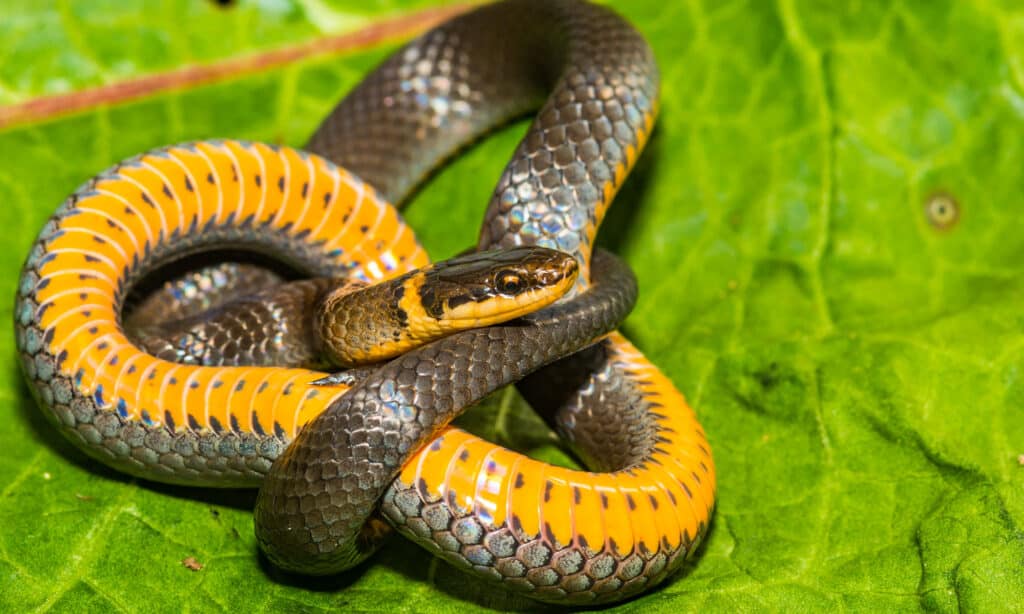
Northern Ringback snake has a bright yellow belly and matching ring around its neck, right behind its head.
©Jay Ondreicka/Shutterstock.com
The aptly named ringneck snake actually looks as if it has a ring around its neck. The northern ringneck snake usually has a complete ring, but the southern ringneck usually has a broken neck ring. Both snakes are a different color on their top and bottom sides; the paler color is on their belly. They are found throughout the eastern two-thirds of the US, ranging from southern Canada to Florida. They are primarily woodland snakes who spend a lot of their time hiding under logs or in leaf litter. Their maximum length is around 15 inches.
Burmese Pythons
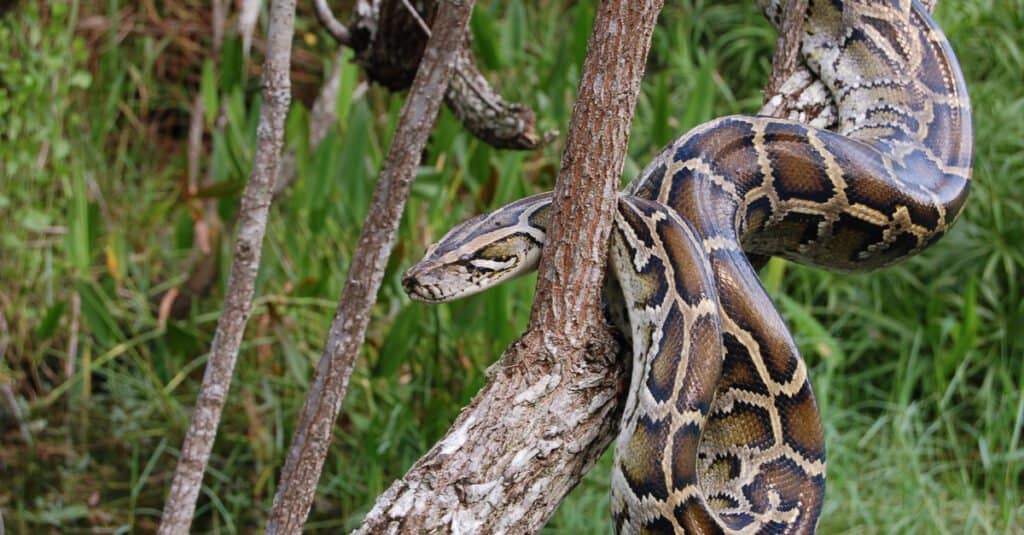
The exotic pet trade can be blamed for the invasion of the
Burmese
Python in the United States.
©Heiko Kiera/Shutterstock.com
This species owes its weirdness to the fact that they should not even be in the US at all! They are not native species but have set up a successful breeding population primarily in the Florida Everglades. The initial Burmese pythons to end up in the wild in the US were escaped or released pets. Many owners were shocked at how huge these guys can grow! Having feasted on the local and unsuspecting small mammal population, some are growing to huge sizes. It is not unusual for them to reach 20 feet and 200 pounds earning them the nickname ‘Florida speed bumps’ when they venture across highways.
The photo featured at the top of this post is © Mark_Kostich/Shutterstock.com
Discover the "Monster" Snake 5X Bigger than an Anaconda
Every day A-Z Animals sends out some of the most incredible facts in the world from our free newsletter. Want to discover the 10 most beautiful snakes in the world, a "snake island" where you're never more than 3 feet from danger, or a "monster" snake 5X larger than an anaconda? Then sign up right now and you'll start receiving our daily newsletter absolutely free.
Thank you for reading! Have some feedback for us? Contact the AZ Animals editorial team.






